The Vienna Highflyer pigeon is a breed of fancy pigeon from Austria. It has been developed over many years of selective breeding.
It is also known by some other names such as Altovolante in Vienna, Haut-Viennois volant and Wiener Hochflieger. The breed was actually developed in the 1800s.
Birds that are incorporated into this highflyer or tumbler type are very popular among the fanciers. And they are widely available to almost every country in the world, with Austria, Germany and Qibla. Read some more information about the breed below.
Origin And History of Vienna Highflyer Pigeon
The Vienna Highflyer is a special type of pigeon that was first bred in Vienna, Austria. The breed is known for its ability to fly very high and for long periods.
The history of this pigeon breed goes back several centuries. These pigeons were originally used in competitions to see which birds could fly the highest and the longest. The Vienna Highflyer has become a favorite among pigeon fanciers over time for its elegance and impressive flying abilities.
Characteristics
Vienna Highflyer pigeon is a medium sized breed with a simple appearance. It has a little, curled up body, cubical head, an horizontal posture and an extremely short beak.
Head of these birds is little, short and high in a cubical form. Forehead and the occipital part form together a clear angle. Their beak is short, thick and edged at the tip, and the nostrils are smooth.
Breast of the Vienna Highflyer pigeon is large, rounded and prominent. They have short back, and their wings are short and solid. Their tail is short, slightly inclined and the plumage is composed by large feathers that are well close-fitting to the body.
The breed is found in many color varieties, but common colors are black, blue, blue dabbed, red, silver and yellow.
Average height of the birds is about 13 cm. And average mature body weight of the Vienna Highflyer pigeon is about 300 grams. Photo from Wikipedia.

Housing Requirements
Like many other domestic pigeon breeds, the Vienna Highflyer pigeons need a safe and comfortable home to stay healthy. Their shelter or housing system should be spacious with good ventilation to keep fresh air flowing.
Try to keep their housing system clean and dry always to prevent diseases. Arrange perches inside for the pigeons to rest on and nest boxes where they can lay eggs. Also always try to protect the pigeons from predators like cats and birds of prey.
Dietary Requirements
Good quality and nutritious is very important for keeping these pigeons. Like many other domestic pigeon breed, the Vienna Highflyer pigeons also need a balanced diet to stay healthy and strong.
Their diet should include a mix of grains (like corn, wheat, barley, and peas). They also benefit from seeds and small amounts of greens or vegetables.
Always try to provide your birds with clean, fresh water every day. Sometimes, pigeons need extra vitamins and minerals, which can be given through special supplements. You can also give them grit, which helps them digest their food properly.
Reproduction/Breeding
Breeding Vienna Highflyer pigeons is relatively easy but a careful process. First of all, you need to choose healthy and strong pigeon pairs. Keep the male and female pigeons together in a nesting area where they can bond.
The female pigeon usually lays two eggs. And both parents take turns of keeping them warm. The eggs hatch into baby pigeons after about 18 days (called squabs). The parents feed the squabs a special milk-like substance they produce until the babies are old enough to eat solid food.
Behavior/Temperament
Vienna Highflyer pigeons are known for their friendly temperament and calm behavior. They enjoy flying high and for long periods, which is a natural part of their temperament.
Caring
Caring for Vienna Highflyer pigeons is relatively easy and it involves providing them with a clean and spacious housing system, a balanced diet, and fresh water every day. Check their health regularly and keep their living area safe from predators.
Make sure they have enough space to fly and exercise. Regularly clean their house to prevent diseases, and provide perches and nesting boxes.
Uses
This pigeon is raised for flying and exhibition purposes. It is also good for raising as pets.
Popularity And Price
Vienna Highflyer pigeons are popular among pigeon enthusiasts. They are popular mainly because of their impressive flying abilities and friendly nature. They are often seen in pigeon flying competitions and are loved as pets.
Exact price of the Vienna Highflyer pigeons can vary based on their quality, age, and training. On average, they can cost anywhere from $50 to $200 each. Please visit any of your nearest breeders to know more about current price in your area.
Lifespan
Vienna Highflyer pigeons have a lifespan of about 10 to 15 years with good care and management.
Special Notes
The Vienna Highflyer pigeon is a very popular breed of domestic fancy pigeon. Although it has common and simple appearance, but it is excellent flyer.
And the breed has the ability to fly a terrific, high and fast. These birds usually fly in a group of 10-30 birds. And they can fly for a duration of 2-4 hours nonstop.
They are good for ornamental purpose and also good for raising as pets. However review full breed profile of this breed in the following chart.
Pros And Cons
Vienna Highflyer pigeons have several pros and cons. Here we are trying to mention it’s major pros and cons.
Pros:
- Excellent flying ability.
- They are also known for their friendly and calm nature.
- They are easy to handle and are good pets.
- Average lifespan of up to 10 to 15 years.
Cons:
- They need a lot of space to fly and exercise.
- Their loft must be kept very clean to prevent diseases, requiring regular maintenance.
- They might be more expensive than other pigeon breeds (especially high-quality ones).
| Breed Name | Vienna Highflyer |
| Other Names | Altovolante in Vienna, Haut-Viennois volant and Wiener Hochflieger |
| Breed Purpose | Exhibition, flying, ornamental, pets |
| Special Notes | Beautiful birds with common appearance, popular, excellent flyers, can fly for a duration of 2-4 hours, good as pets |
| Breed Class | Small to medium |
| Weight | Around 300 grams |
| Climate Tolerance | Almost all climates |
| Flying Ability | Excellent |
| As Pets | Good |
| Color | Mainly black, blue, blue dabbed, red, silver and yellow |
| Rarity | Common |
| Country/Place of Origin | Austria |

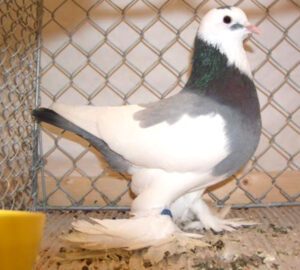

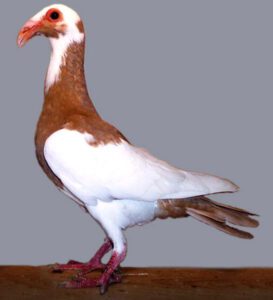
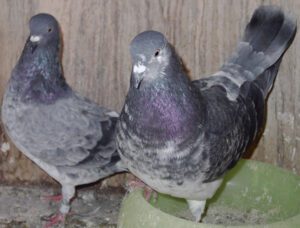
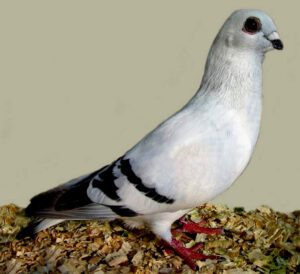
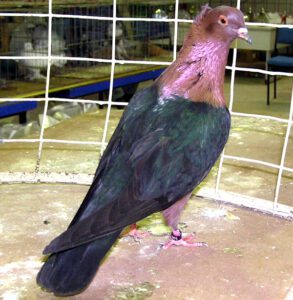
I am particularly interested in the Cumulet, which I believe is known as a high-flyer. The information I would like is, at what elevation do these birds typically fly? I’m also interested in what motivated the development a bird that typically flies at a greater elevation than it is common for the ancestral Rock dove.
I appreciate the chart you include on each type of pigeon, weight, country of origin, age of the type, etc.
Thank you for your attention to detail,
Paul